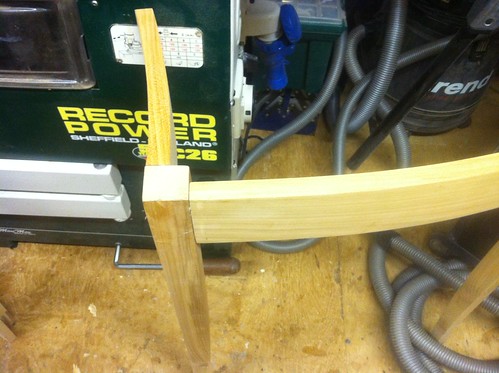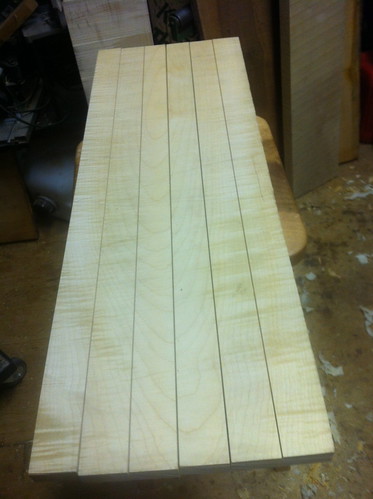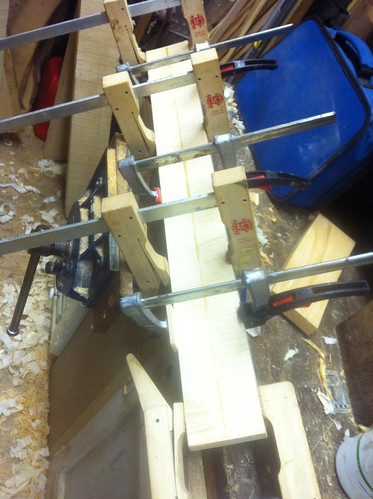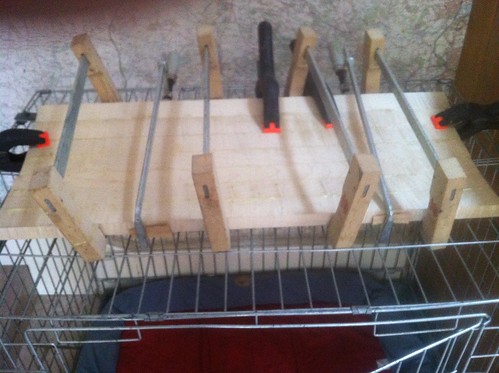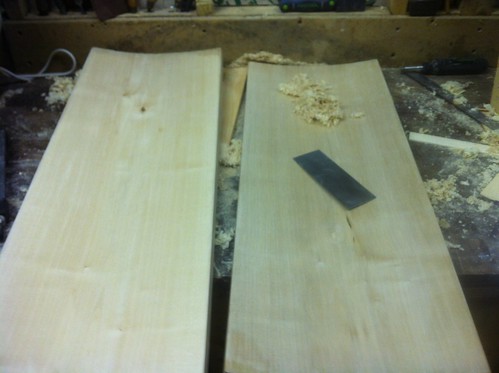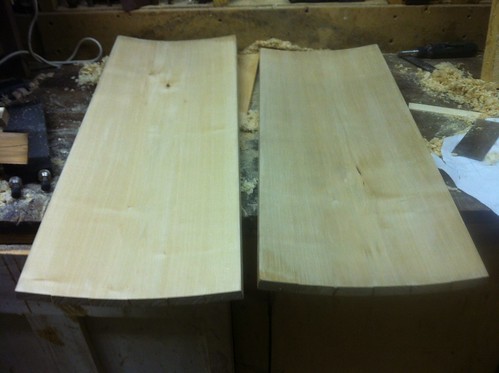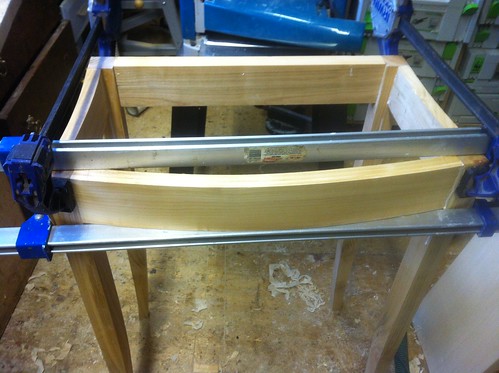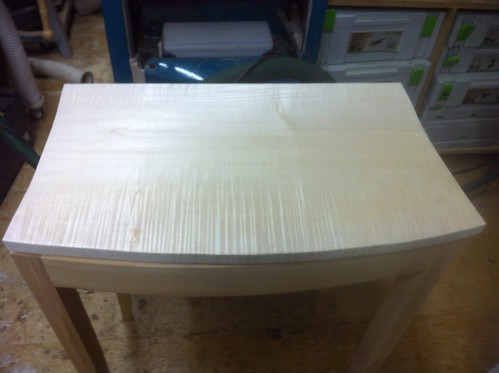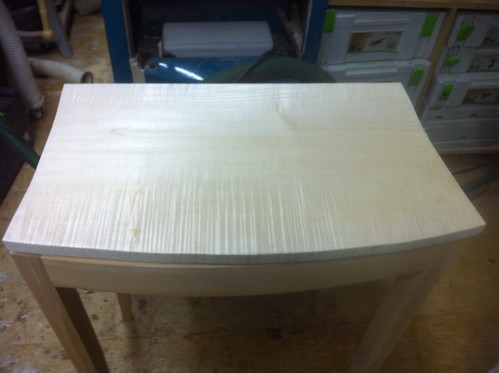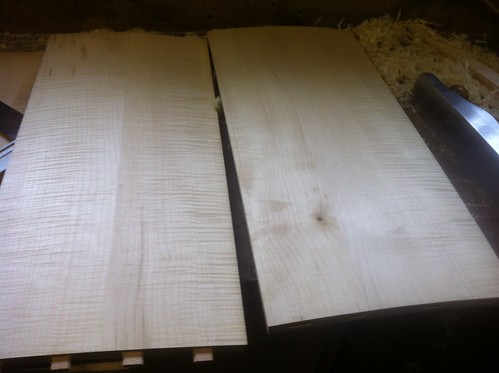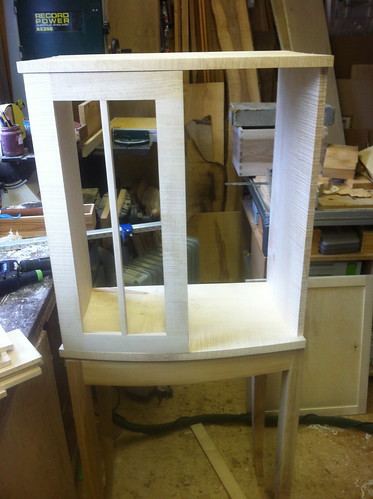My apologies for the delays in this project - I had a busy weekend on call and seem to have been late every night at work
Anyway have got a few hours done this week so far.
So I have definitely decided that the front of the rails of the base will be flush with the fronts and sides of the legs of the base - plus the side rails of the base will be concave so that the front corners still appear to be a right angle - like this (note this is still the old curved front piece in this photo)
I have already remade the front - a little wider to match the doors width with straight grained cherry and it looks much better - I will post a photo when it comes out of clamps tonight probably
The concave sides to the base will be matched by the concave coopered curved side panels
The coopered panel business has gone quite well in the end - although only after making one panel and then abandoning it as it was not wide enough - so I had to go back to the sawmill and dig around until I found a 12 inch sycamore board and my choice was limited to 2 boards neither of which was as beautiful as some of the other narrower boards - which sucks.
Here was my first attempt. I thicknessed a 720mm long piece to 20 mm, then cut it into 45mm section widths - then planed one edge of each square and using the micro-adjust feature on the fence of my Record C26 combination machine measured a 88 degree angle with the horizontal and then used the surface planer to get the 2 degree angle bevel on the other side. Here are the resulting 6 pieces lined up before glueing
Then I glued these up in pairs to start with
Before gradually glueing those pairs together. I used polyurethane glue to minimise any glue line - don't like TB3 in this respect for light woods
Anyway it was then I realised that this panel was only going to be 240 mm wide - so if you added the thickness of the door onto it made the thickness of the whole cabinet only 260 mm which is not enough to contain all the gin bottles my wife will require - but also as the width is now nearly 600 mm because of the doors which would make it look very wide and yet shallow. I did try to grain match another piece to add on without any success hence I found another 12 inch wide, 2 inch thick sycamore board, cut 720mm in length off it, and was able to make 2 complete curved panels 18mm thick out of this which measure 280mm on the concave (external surface which will make the cabinet overall 300 mm deep which is what I want
Here are the panels roughly glued up
http://farm8.staticflickr.com/7207/6963527937_d15d98ddc6.jpg[/img
Then in the absence of any hollowing planes, I used a rotex sander with 80 grit paper to get the dried glue excess off and sand them very roughly
[img]http://farm8.staticflickr.com/7181/6963531393_949eb695c3.jpg
Before finishing with card scrapers - hard work but was very controllable and has given a great finish
They have come out quite well, although there are no medullary rays on this panel which is a shame
I will start work on the rest of the cabinet tonight - top and bottom and the rear panel which will have to be frame and panel construction
Thanks for looking
Mark

































